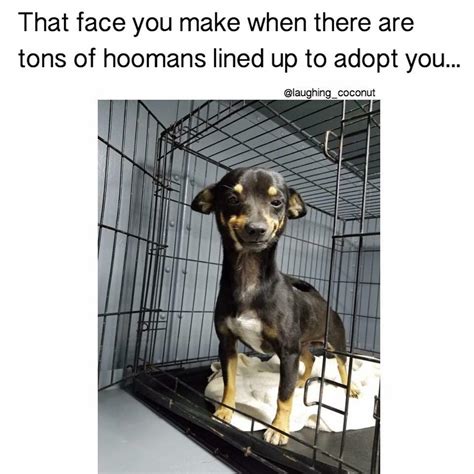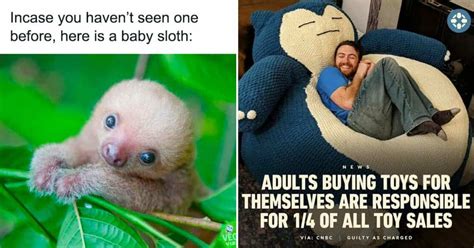
A golden retriever’s gleeful reaction to receiving a life-sized stuffed toy version of himself has captured hearts online, turning a heartwarming moment into a viral sensation. The video, showcasing the dog’s unbridled joy and playful interaction with its plush doppelganger, has garnered millions of views and widespread attention across social media platforms.
Golden Retriever’s Joyful Encounter with Life-Sized Plushie Sparks Viral Sensation
A golden retriever named Gus has become an internet sensation after a video of his reaction to receiving a life-sized stuffed animal replica of himself went viral. The heartwarming footage, initially shared on platforms such as TikTok and Instagram, shows Gus bounding with excitement, wagging his tail furiously, and playfully interacting with the oversized plush toy. The video has since been widely circulated, amassing millions of views and eliciting overwhelmingly positive reactions from viewers across the globe.
The video opens with Gus being led into a room where the plushie, nearly as large as himself, is placed prominently on the floor. Initially, Gus appears cautiously curious, sniffing at the toy before seemingly recognizing its likeness. What follows is a burst of pure canine joy, with Gus jumping around the plushie, nudging it with his nose, and even attempting to “play bow,” a common canine invitation for play.
According to the dog’s owner, the intent behind the gift was to provide Gus with a comforting companion, especially during times when he might be feeling anxious or lonely. “We thought it would be a fun and comforting gift for him,” the owner stated, noting that Gus has a tendency to experience separation anxiety when left alone for extended periods. The owner further mentioned that the plushie is made of soft, durable materials, ensuring its safety and longevity as a playmate for the energetic golden retriever.
The online response to the video has been overwhelmingly positive, with many commenters praising Gus’s adorable reaction and the owner’s thoughtful gesture. Some viewers have even shared their own stories of pets reacting to similar gifts, highlighting the emotional bond between humans and their animal companions. Veterinarians and animal behaviorists have also weighed in, noting that Gus’s reaction is a clear indication of positive reinforcement and emotional well-being.
The incident also brings attention to the growing trend of personalized pet products and services. The market for pet accessories, including custom-made toys, clothing, and furniture, has seen significant growth in recent years, reflecting the increasing humanization of pets and the desire to provide them with the best possible care and comfort. The popularity of Gus’s video underscores the emotional connection that many people have with their pets and the lengths they are willing to go to ensure their happiness and well-being.
The Making of a Viral Moment
The virality of Gus’s video can be attributed to several factors. First and foremost, the video captures a genuine moment of unadulterated joy, which resonates with viewers on an emotional level. The sight of a beloved pet experiencing such happiness is inherently heartwarming and uplifting, providing a welcome respite from the often-negative news cycles that dominate social media.
Secondly, the video is well-produced, with clear visuals and sound that effectively capture Gus’s reaction. The use of close-up shots allows viewers to see the minute details of Gus’s expressions, further enhancing the emotional impact. The editing is also well-paced, ensuring that the video maintains viewers’ attention throughout.
Thirdly, the video was shared strategically across multiple social media platforms, maximizing its reach and visibility. The owner initially posted the video on TikTok and Instagram, where it quickly gained traction due to the platforms’ algorithm-driven content discovery systems. From there, the video was shared by various online publications and influencers, further amplifying its reach.
Finally, the video’s virality was also fueled by the relatability of the content. Many pet owners can relate to the desire to provide their animals with the best possible care and to witness their happiness. The video taps into this shared emotional connection, making it more likely to be shared and discussed.
The Impact of Viral Videos on Pet Culture
The virality of Gus’s video highlights the growing influence of social media on pet culture. Platforms like TikTok, Instagram, and YouTube have become important channels for pet owners to share their experiences, connect with other pet lovers, and learn about new products and services.
Viral videos featuring pets can have a significant impact on consumer behavior, driving demand for certain products and services. In the case of Gus’s video, it is likely that many viewers will be inspired to purchase similar plush toys for their own pets. This can lead to increased sales for pet product manufacturers and retailers.
Moreover, viral videos can also raise awareness about important issues related to animal welfare. For example, videos showcasing the benefits of pet adoption or the importance of responsible pet ownership can help to promote positive change in the pet community.
However, it is important to note that viral videos can also have negative consequences. In some cases, viral videos can promote unrealistic expectations about pet ownership or encourage irresponsible behavior. For example, videos showcasing exotic animals as pets can contribute to the illegal wildlife trade and the exploitation of animals.
Therefore, it is important to approach viral videos featuring pets with a critical eye and to consider the potential consequences of their content. Pet owners should be responsible in their own social media postings and avoid promoting content that could harm animals or promote irresponsible behavior.
The Science Behind a Dog’s Joy
Understanding why Gus reacted so positively to his plush counterpart requires delving into canine psychology and behavior. Dogs, unlike humans, primarily perceive the world through scent, followed by sight and sound. While Gus likely didn’t immediately recognize the plushie as a perfect replica of himself visually, the combination of its size, shape, and perhaps even a lingering scent from the manufacturing process, would have registered as something novel and potentially positive.
The act of play, especially the “play bow” exhibited by Gus, is a crucial element. Play is a natural and essential behavior for dogs of all ages, serving as a means of social bonding, physical exercise, and mental stimulation. The plushie, in its large and inviting form, presented Gus with an opportunity for play, triggering his innate instincts.
Furthermore, the presence of his owner during the introduction of the plushie likely amplified Gus’s positive reaction. Dogs are highly attuned to human emotions and body language. If Gus sensed his owner’s excitement and approval, he would have been even more inclined to approach the plushie with enthusiasm.
Animal behaviorists emphasize that dogs often form strong attachments to inanimate objects that provide comfort or security. This is why many dogs have a favorite toy or blanket that they carry around and sleep with. The plushie, in this case, could potentially become a source of comfort for Gus, particularly when his owners are away.
The Growing Market for Personalized Pet Products
Gus’s viral video inadvertently shines a spotlight on the booming market for personalized pet products. From custom-made portraits and clothing to DNA testing kits and subscription boxes tailored to individual pet needs, the pet industry is undergoing a significant transformation.
This trend is driven by several factors, including the increasing humanization of pets, the rising disposable income of pet owners, and the growing availability of online shopping and personalized manufacturing technologies. As pets become increasingly integrated into family life, owners are more willing to spend money on products and services that enhance their pets’ well-being and happiness.
The market for personalized pet products is particularly strong among millennials and Gen Z, who are more likely to view their pets as “fur babies” and to prioritize their comfort and happiness. These younger generations are also more likely to be active on social media, sharing photos and videos of their pets and seeking out recommendations from other pet owners.
The popularity of personalized pet products also reflects a broader trend towards customization and personalization in consumer culture. Consumers are increasingly seeking out products and services that are tailored to their individual needs and preferences. This trend is evident in various industries, from fashion and beauty to food and beverage.
The Ethics of Pet Ownership and Social Media
While Gus’s video is undoubtedly heartwarming, it also raises important questions about the ethics of pet ownership and social media. As pet owners increasingly share their lives with their animals online, it is important to consider the potential impact of their actions on their pets’ well-being.
One concern is the potential for exploitation. Some pet owners may be tempted to create content that is designed to generate views and likes, even if it comes at the expense of their pets’ comfort or dignity. For example, dressing pets in costumes or forcing them to perform tricks can be stressful and uncomfortable for the animals.
Another concern is the potential for privacy violations. Pet owners should be mindful of the information they share about their pets online, as it could be used to identify them or their owners. This is particularly important for pets that have been rescued from abusive situations or that are at risk of being stolen.
Finally, it is important to remember that social media is not a substitute for real-world interaction. Pet owners should prioritize spending quality time with their animals and providing them with the care and attention they need to thrive. While sharing photos and videos of pets online can be a fun and rewarding experience, it should not come at the expense of their well-being.
The Long-Term Effects of a Viral Moment
The long-term effects of Gus’s viral moment remain to be seen. While the immediate impact has been overwhelmingly positive, it is important to consider the potential consequences for Gus and his owners.
One possibility is that Gus will become a “celebrity dog,” with increased attention from fans and media outlets. This could lead to new opportunities for Gus and his owners, such as endorsements and sponsorships. However, it could also put a strain on their privacy and require them to manage Gus’s public image.
Another possibility is that Gus’s video will inspire other pet owners to create similar content, leading to a wave of viral videos featuring pets. This could further normalize the humanization of pets and drive demand for personalized pet products. However, it could also lead to increased competition for attention and a decline in the quality of pet-related content.
Ultimately, the success of Gus’s viral moment will depend on how his owners manage it. If they are able to maintain a balance between sharing Gus’s life with the world and protecting his well-being, then his story could serve as a positive example of the power of social media to connect people and celebrate the human-animal bond.
Expert Commentary and Analysis
Dr. Sarah Jones, a certified animal behaviorist, commented on Gus’s reaction: “The positive response from Gus is not entirely surprising. Golden Retrievers are known for their affectionate and playful nature. The plushie, being similar in size and shape to himself, likely triggered his curiosity and playful instincts. The key factor here is that the interaction was positive and non-threatening, reinforcing his initial curiosity and leading to joyful play.”
Dr. Jones further added, “It’s important for owners to monitor their dog’s reaction to new toys or objects. If a dog displays signs of fear or aggression, it’s crucial to remove the object and consult with a professional behaviorist. However, in Gus’s case, his reaction indicates a healthy and well-adjusted temperament.”
Marketing expert, Michael Thompson, weighed in on the viral aspect: “This video is a perfect example of how emotional content can resonate with audiences online. People are drawn to genuine displays of happiness and affection, especially in a world that often feels overwhelming and negative. The simplicity of the video, combined with the undeniable cuteness of Gus, created a perfect storm for virality.”
Thompson continued, “Brands can learn a lot from this. Authenticity is key. Consumers are increasingly skeptical of manufactured content and are more likely to engage with brands that demonstrate genuine values and connect with them on an emotional level.”
Frequently Asked Questions (FAQ)
-
What breed of dog is Gus? Gus is a Golden Retriever, a breed known for its friendly, intelligent, and playful nature.
-
What was the owner’s intention behind getting Gus the life-sized plush toy? The owner intended to provide Gus with a comforting companion, especially to help alleviate separation anxiety when Gus is left alone.
-
How did the video of Gus’s reaction go viral? The video went viral due to a combination of factors, including the genuine display of joy, the high quality of the video production, strategic sharing across multiple social media platforms, and the relatable nature of the content for pet owners.
-
Are there any potential downsides to a dog having a life-sized plush toy? Potential downsides could include the dog becoming overly attached to the toy, potential for destructive behavior if the toy is not durable, and the possibility of the toy displacing real-life social interactions with other dogs or people.
-
What does Gus’s reaction say about the bond between humans and their pets? Gus’s reaction highlights the deep emotional connection and companionship that exists between humans and their pets. It demonstrates the desire of pet owners to provide comfort and happiness to their animals and the positive impact that pets can have on human well-being.
The Evolution of Pet Ownership
The viral video of Gus and his plushie doppelganger is more than just a heartwarming internet sensation; it’s a snapshot of the evolving landscape of pet ownership in the 21st century. Pets are no longer simply animals that reside in our homes; they are increasingly viewed as integral members of the family, deserving of the same care, attention, and even luxuries as any other human member.
This shift in perception is fueled by a number of converging factors. The rise of urbanization and smaller family sizes has led many individuals and couples to seek companionship in pets. Pets provide a sense of purpose, unconditional love, and emotional support, filling a void that may otherwise be present in their lives.
Furthermore, advancements in veterinary medicine and pet care products have significantly extended the lifespans of pets and improved their quality of life. Pet owners are now more proactive in seeking preventative care, providing specialized diets, and investing in therapies to address behavioral or medical issues.
The internet and social media have also played a crucial role in shaping modern pet ownership. Online communities provide a platform for pet owners to share experiences, exchange advice, and celebrate the joys of pet companionship. Social media platforms like Instagram and TikTok have become virtual showcases for adorable pet photos and videos, further amplifying the human-animal bond.
The Psychology of Anthropomorphism
The tendency to attribute human characteristics, emotions, and intentions to animals, known as anthropomorphism, is a fundamental aspect of how humans relate to pets. Anthropomorphism is not necessarily a negative phenomenon; in fact, it can be a natural and beneficial way to connect with animals and understand their behavior.
By attributing human-like qualities to pets, owners are better able to empathize with their needs and provide them with appropriate care. For example, an owner who believes that their dog experiences boredom is more likely to provide them with stimulating toys and activities.
However, excessive anthropomorphism can also lead to unrealistic expectations and potentially harmful behaviors. Treating a pet like a human child, for instance, can result in neglecting their natural instincts and needs. It’s important for pet owners to strike a balance between recognizing the unique qualities of their pets and appreciating them for who they are as animals.
The Economic Impact of the Pet Industry
The growing humanization of pets has had a profound impact on the pet industry, which has experienced exponential growth in recent years. The global pet industry is now a multi-billion dollar market, encompassing a wide range of products and services, including food, toys, grooming supplies, veterinary care, and pet insurance.
The demand for premium and personalized pet products is particularly strong, reflecting the willingness of pet owners to spend money on items that enhance their pets’ well-being and happiness. This includes everything from organic and grain-free pet food to custom-made clothing and accessories.
The pet industry is also a major source of employment, providing jobs for veterinarians, groomers, trainers, pet store employees, and a host of other professionals. As the pet population continues to grow, the economic impact of the pet industry is expected to further increase in the years to come.
The Future of Human-Animal Interactions
The story of Gus and his plushie is a glimpse into the future of human-animal interactions. As technology continues to advance, we can expect to see even more innovative products and services designed to enhance the lives of pets and strengthen the bond between humans and animals.
Smart pet devices, such as activity trackers and automated feeders, are already becoming increasingly popular. These devices provide owners with valuable insights into their pets’ health and behavior, allowing them to provide more personalized care.
In the future, we may see the development of even more sophisticated technologies, such as wearable sensors that can detect early signs of illness in pets or virtual reality experiences that allow pets to interact with their owners remotely.
The ethical implications of these technologies will need to be carefully considered to ensure that they are used in a responsible and humane manner. However, if used properly, technology has the potential to revolutionize the way we care for and interact with our pets.
Conclusion
The viral video of Gus the Golden Retriever and his life-sized plushie serves as a reminder of the profound connection between humans and animals. It highlights the joy, companionship, and emotional support that pets provide, and it underscores the growing importance of pets in modern society. While the video is undoubtedly heartwarming, it also raises important questions about the ethics of pet ownership and the responsible use of social media. By considering these questions, we can ensure that the future of human-animal interactions is one that benefits both humans and animals alike.









